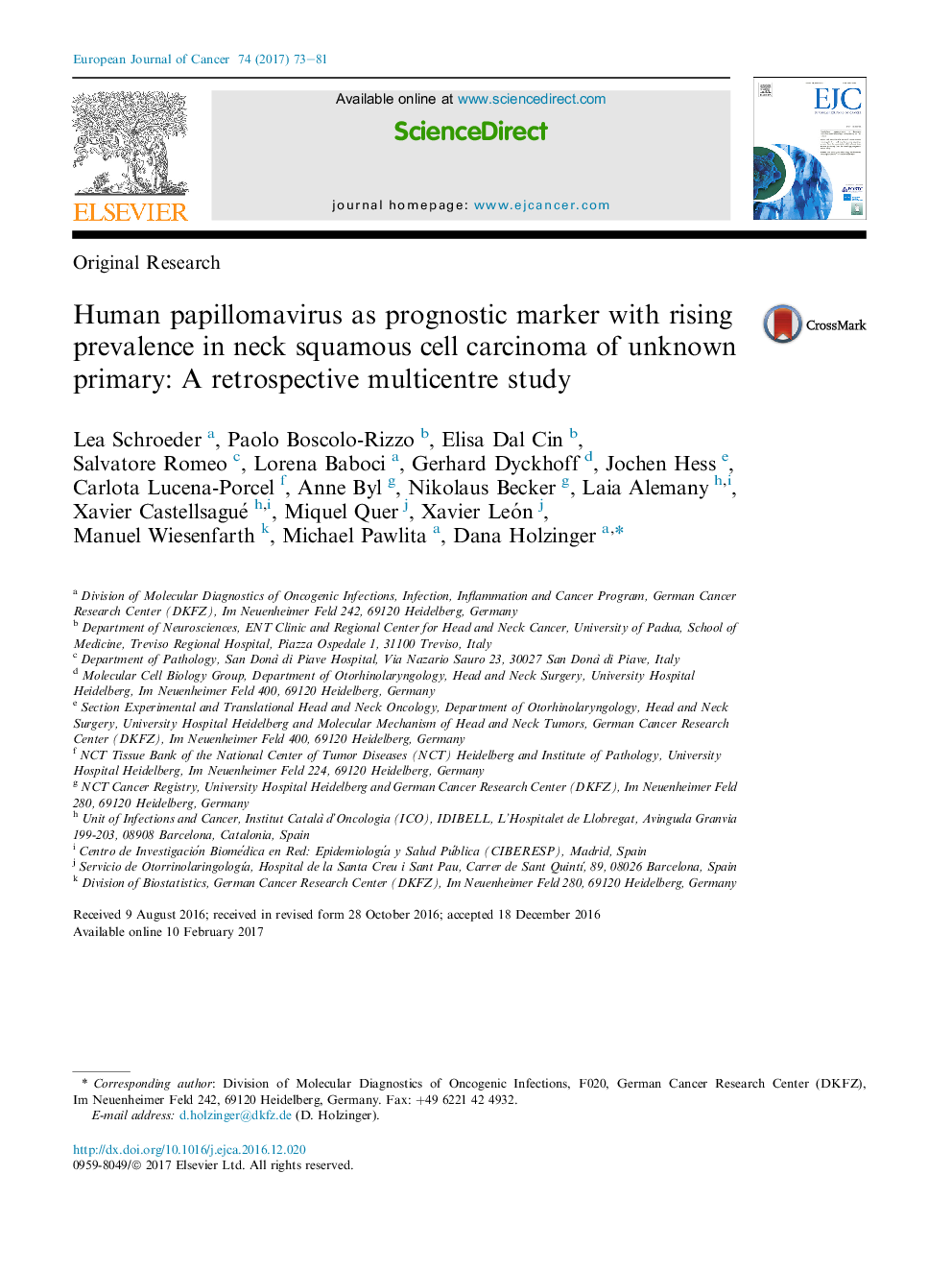| کد مقاله | کد نشریه | سال انتشار | مقاله انگلیسی | نسخه تمام متن |
|---|---|---|---|---|
| 5526370 | 1547058 | 2017 | 9 صفحه PDF | دانلود رایگان |
- A substantial proportion (16%) of neck squamous cell carcinomas of unknown primary tumour (NSCCUP) are human papillomavirus (HPV)-driven with an increasing trend.
- HPV-driven NSCCUP patients have significantly improved overall survival (OS) and progression-free survival (PFS).
- This survival benefit suggests implementation of HPV RNA assessment in NSCCUP diagnosis.
- HPV RNA detection in NSCCUP might allow focussing treatment on the oropharynx.
Patients with neck squamous cell carcinomas of unknown primary tumour (NSCCUP) present with lymph node metastasis without evidence for a primary tumour. Most patients undergo an aggressive multimodal treatment, which induces severe, potentially unnecessary toxicity. Primary tumours of NSCCUP can be hidden in the oropharynx. Human papillomavirus (HPV) is causally involved in a subgroup of oropharyngeal squamous cell carcinomas (OPSCC) associated with early lymph node metastasis and good prognosis. Detection of markers for HPV transformation in NSCCUP could allow focussing on the oropharynx in primary tumour search and could be of value for choice and extent of treatment.In a retrospective multicentre study (Germany, Italy and Spain), we analysed metastatic lymph nodes from 180 NSCCUP patients for the presence of HPV DNA, HPV E6*I mRNA and cellular p16INK4a overexpression, a surrogate marker for HPV-induced transformation. HPV status, defined as positivity for viral mRNA with at least one additional marker, was correlated with clinical parameters and survival outcome.A substantial proportion (16%) of NSCCUP were HPV-driven, mainly by HPV16 (89%). HPV prevalence increased with year of diagnosis from 9% during 1998-2004 to 23% during 2005-2014 (p = 0.007). HPV-driven NSCCUP had significantly better overall and progression-free survival rates (p â¤Â 0.008).Based on this survival benefit, it is contended that HPV RNA status should be included in NSCCUP diagnosis and in therapeutic decision-making. Deintensification of radiation in patients with HPV-driven NSCCUP, while concurrently concentrating on the oropharynx appears to be a promising therapeutic strategy, the efficacy of which should be assessed in prospective trials. To our knowledge, this is the largest study on HPV in NSCCUP.
Journal: European Journal of Cancer - Volume 74, March 2017, Pages 73-81
